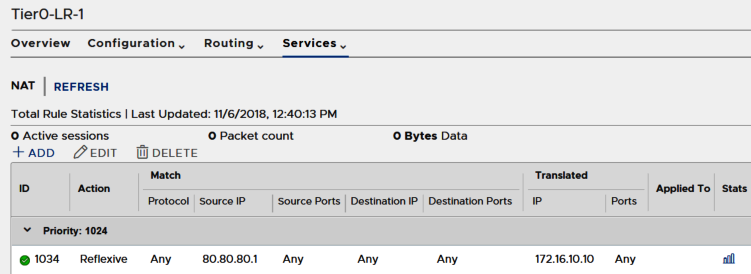When a tier-0 or tier-1 logical router is running in active-active mode, you cannot configure stateful NAT where asymmetrical paths might cause issues. For active-active routers, you can use reflexive NAT, which is sometimes called stateless NAT.
For reflexive NAT, you can configure a single source address to be translated, or a range of addresses. If you configure a range of source addresses, you must also configure a range of translated addresses. The size of the two ranges must be the same. The address translation will be deterministic, meaning that the first address in the source address range will be translated to the first address in the translated address range, the second address in the source range will be translated to the second address in the translated range, and so on.
Prerequisites
Verify that Manager mode is selected in the NSX Manager user interface. See NSX Manager. If you do not see the Policy and Manager mode buttons, see Configure User Interface Settings.
Procedure
Results
The new rule is listed under NAT. For example:
